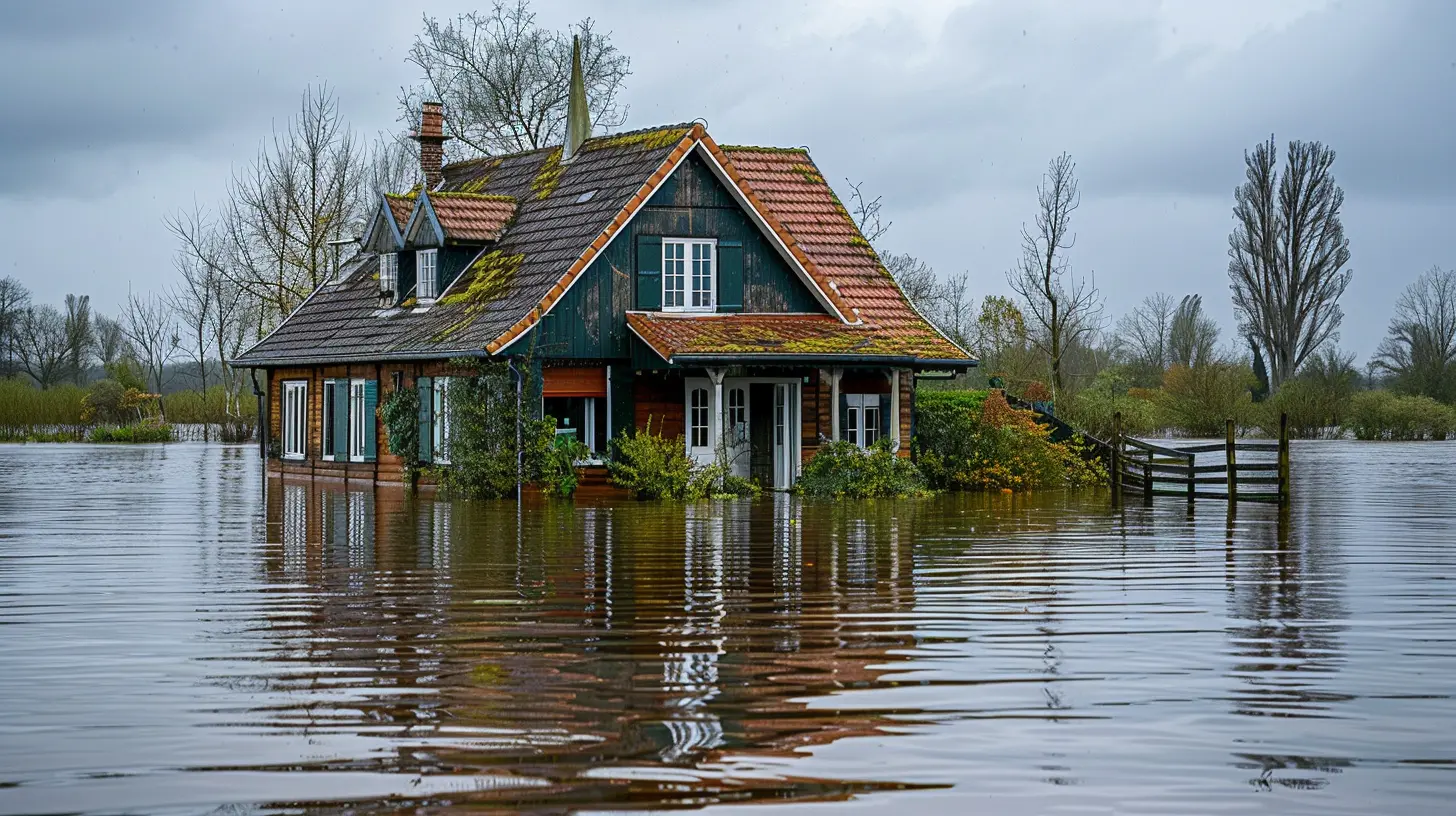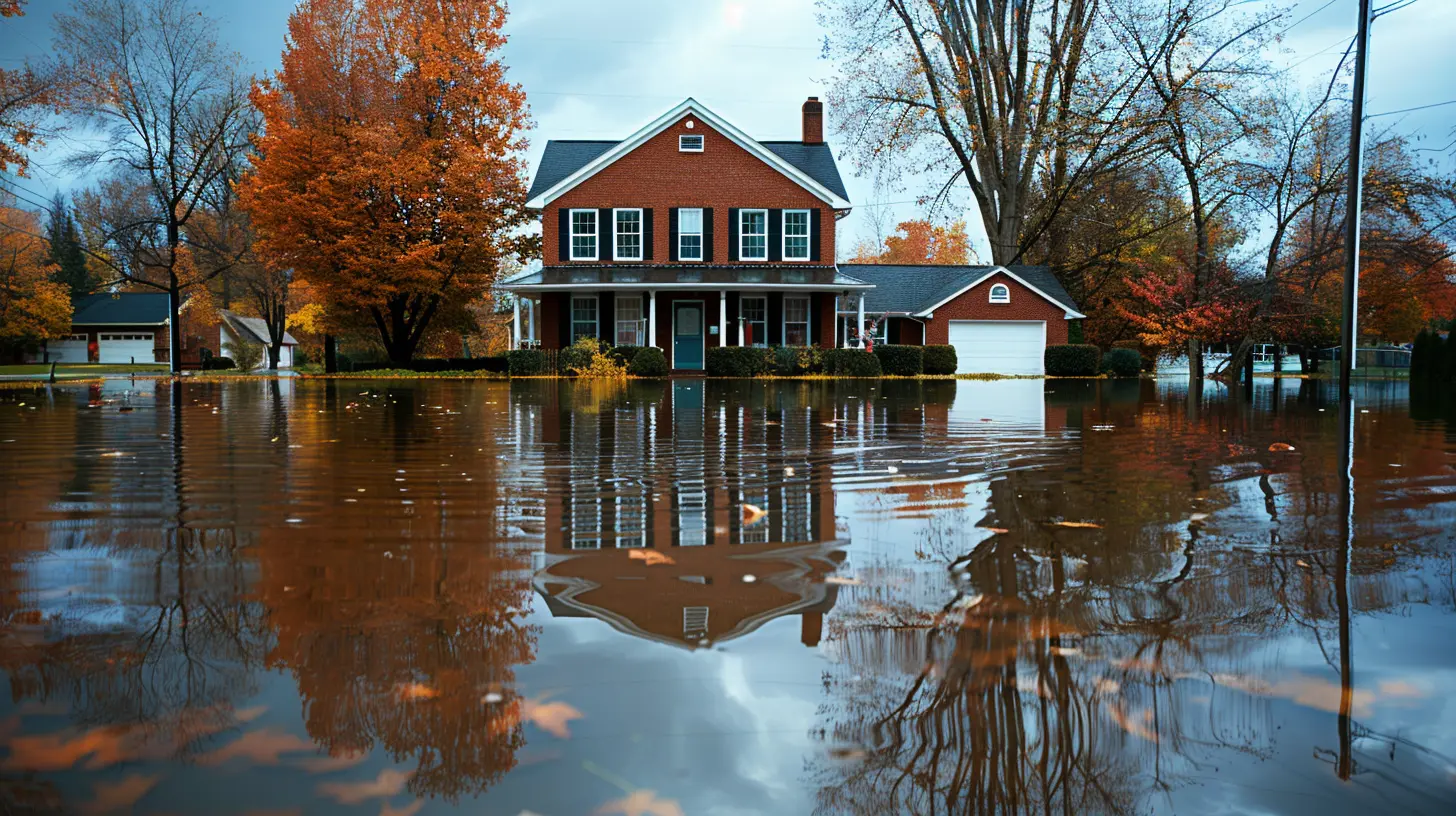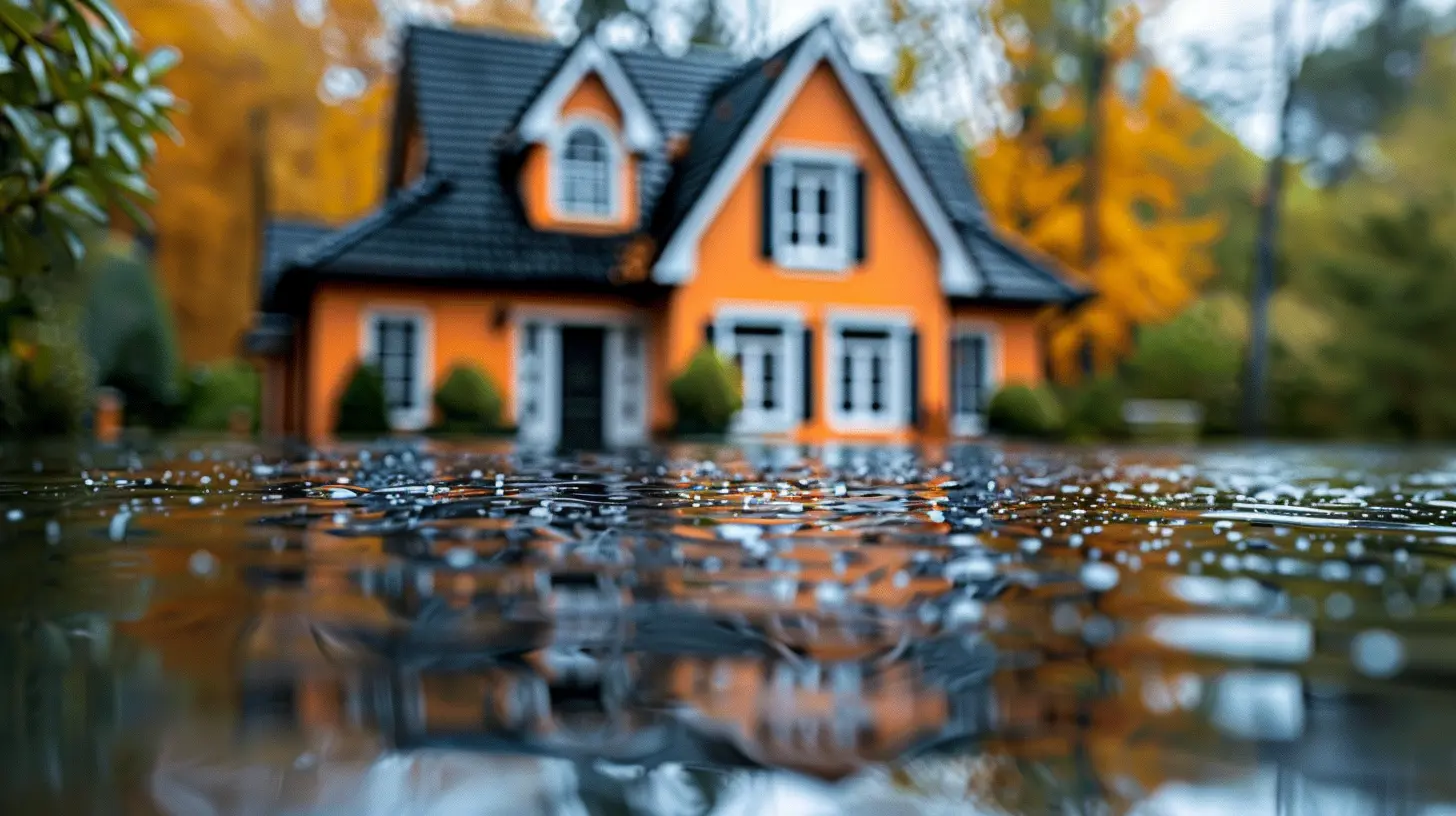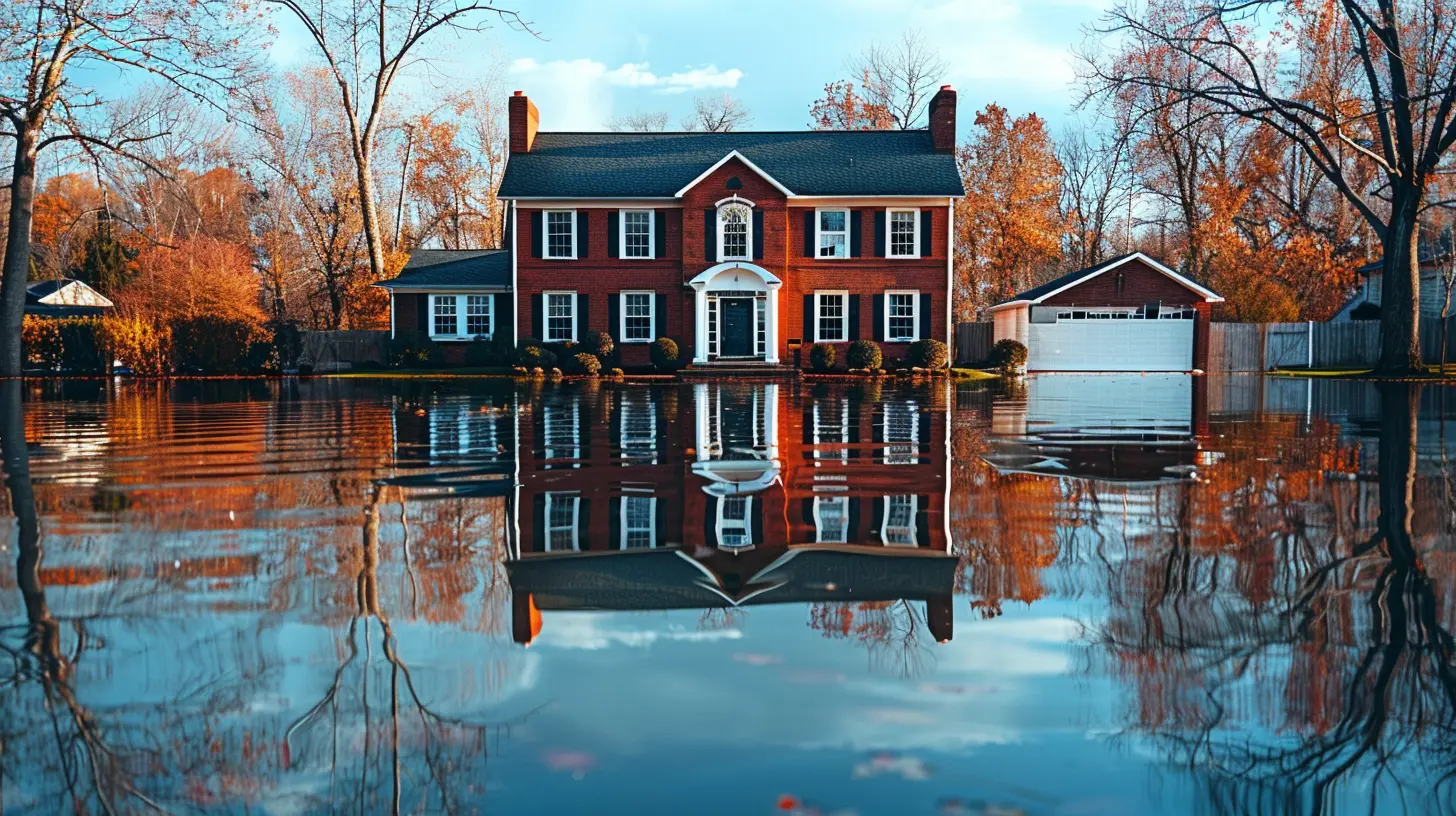The Difference Between Flood Insurance and Homeowners Insurance
6 October 2025
Alright, let’s talk insurance—yeah, I know, try not to fall asleep on me here. I promise, I’m going to keep this light-hearted and totally non-boring. We’re diving into that oh-so-juicy topic: the difference between flood insurance and homeowners insurance.
I get it—you’re probably thinking, “Aren’t they the same thing? My house gets water damage, insurance covers it, right?” Oof. If that were true, a lot of folks in flood-prone areas wouldn’t be crying into their soggy sofas after a big storm. Let’s not let that be you.
So grab a cup of coffee (or a glass of wine, I won’t judge), and let’s unravel this insurance mystery together.
What Even Is Homeowners Insurance?
Let’s break it down Barney-style. Homeowners insurance is your everyday, regular ol’ coverage that protects your home from common bad-luck scenarios. We’re talking:- Fire? Covered. 🔥
- Theft? Covered. 🦹♂️
- Vandalism? Covered, too. 🎨
- That tornado that turns your living room into a jigsaw puzzle? You’re good. 🌪️
Basically, if it’s a disaster that doesn’t involve water rising up from the ground like Mother Nature's version of a sneak attack, your homeowners insurance typically has your back.
But—and this is a big, important, tattoo-it-on-your-forehead kind of but—it does not cover flooding caused by natural disasters like hurricanes, heavy rain, or overflowing rivers. Yeah, you read that right. Water is sneaky.
So What the Heck Is Flood Insurance Then?
Flood insurance is like that specific friend who only shows up for one thing—like the guy who only comes to your parties if there’s karaoke. His thing is only flooding, and nothing else.Flood insurance is a separate policy that you usually get through the National Flood Insurance Program (NFIP), run by FEMA, or through some private insurers who are brave (and smart) enough to offer it.
It covers:
- Rising water from heavy rain
- Overflowing rivers
- Flash floods
- Storm surges
- Snowmelt disasters gone rogue
In other words, when the water starts creeping up from the outside and making itself at home inside your house like an uninvited guest—flood insurance is the one picking up the tab.
The Water Damage Confusion (aka The “Wait, What?!” Moment)
Here’s where people get tripped up. Say your pipe bursts inside your wall and floods the kitchen. Is that flood insurance? Nope. That’s your homeowners policy.Now, if a nearby river jumps its banks and turns your basement into a swimming pool—homeowners insurance waves goodbye and goes, “Not my department.” That’s flood insurance territory.
It’s like calling your dentist because your foot hurts. Right idea (you’re still calling a doctor-type person), totally wrong specialty.
Quick Comparison Chart (Because Who Doesn’t Love a Good Table?)
| Feature | Homeowners Insurance | Flood Insurance ||--------|----------------------|-----------------|
| Covers internal water damage (like busted pipes) | ✅ | ❌ |
| Covers rising water from external sources | ❌ | ✅ |
| Required by lenders in flood zones? | Sometimes | Yes, if high-risk |
| Offered by private insurers | ✅ | ✅ (but mostly through NFIP) |
| Covers fire, theft, wind, hail, etc. | ✅ | ❌ |
| Covers stuff inside your house | ✅ | ✅ (depends on policy limits) |
Wait… Do I Really Need Both?
Here’s the thing: It depends where you live.If you’re nesting in Arizona on top of a cactus with not a river in sight, flood insurance might be overkill. But if you’re living near a coast, a lake, a river—or basically anywhere water has room to get dramatic—you should seriously consider it.
In fact, FEMA will tell you that over 20% of flood claims come from houses outside high-risk flood zones. Translation? Just because you’re not technically “in the splash zone” doesn’t mean you’re safe from surprise water damage.
It's like not wearing sunscreen on a cloudy day—just because you don't see the danger doesn’t mean it's not there.
How Much Does Flood Insurance Cost? (A.K.A. Am I Going to Need a Side Hustle?)
Cost varies more than your Aunt Martha’s mood swings. The main things that affect your flood insurance rates include:- Your home's location
- Your flood risk level (determined by flood maps)
- Your home’s age
- Your building type
- What coverage you choose (structure only vs. contents too)
On average, NFIP flood insurance policies cost around $700–$1,000 per year, but they can be as low as $300 or as high as a luxury car payment each month if you’re in a very high-risk area.
Homeowners insurance? That typically ranges from a few hundred to a couple of thousand dollars a year, depending on home value, location, and all the usual suspects.
So yeah, owning a home and insuring it properly isn’t cheap—but neither is replacing all your furniture and drywall out of pocket because a storm decided to crash your weekend.
Can I Bundle Flood and Homeowners Insurance?
Some private insurers will happily bundle the two like a happy insurance sandwich. But most major flood insurance policies—especially if backed by the NFIP—are standalone deals.That means two policies, two premiums, and probably twice the paperwork (why is adulting like this?). But hey, better that than having to tell your spouse the new flat-screen is now an aquatics exhibit.
Claims Process: Who’s Easier to Deal With?
Okay, we’re not gonna lie—insurance claims are rarely as smooth as butter. They’re more like peanut butter stuck to the roof of your mouth: sticky but doable.With homeowners insurance, filing a claim is usually straightforward. You call, you explain, they send someone to assess the damage, and boom—you hopefully get paid.
Flood insurance, especially through NFIP, can be a little slower. You’ll need:
- Proof of damage (take pictures before you start cleanup!)
- Inventory of damaged stuff
- Possibly an inspector visit
- A bit of patience and a whole lot of coffee
Still, as frustrating as it might be, you’re way better off having the coverage in place than trying to DIY your recovery with duct tape and prayers.
Real-Life Example (Because Stories Stick)
Let’s talk about Dave. He’s a real guy (okay, not really, I made him up—but stay with me). Dave lives in a cute little bungalow near a creek. The creek hasn’t flooded in 50 years, so Dave figures, “Why pay extra for flood insurance?”Then one spring, the creek decides it’s done being a peaceful stream and becomes a raging mini-river overnight. Dave wakes up to 12 inches of water in his living room and his precious new PS5 floating past the couch.
Guess what? No flood insurance. Homeowners policy won’t touch it. Dave’s out $50,000 and has to crowdfund repairs.
Moral of the story? Don’t be like Dave.
Pro Tips: How to Protect Your Castle
1. Check your flood zone – Use FEMA’s flood maps (just Google “FEMA flood map”) to check your risk level.2. Talk to an insurance agent – Seriously, just ask them. They’ll tell you if flood insurance makes sense.
3. Don’t assume water damage = covered – Read the fine print in your current homeowners policy.
4. Document your stuff – Take pics or videos of your home inventory. Future you will thank current you.
5. Ask about bundling – Even if separate, some insurers give discounts for having both.
The Bottom Line
At the end of the day, flood insurance and homeowners insurance are like Batman and Superman. Both powerful, both heroes—but they have different roles to play. One covers your house from everyday chaos, the other steps in when your street turns into Venice.If you’ve made it this far (bless your attention span), remember this: insurance is like a life jacket. You don’t think about it much until you really, really need it.
So go forth, review your policies, and maybe give your insurance agent a buzz. Your home deserves the full protection package—and your future self will sleep way better knowing you’ve got all your bases covered.
Just don’t be like Dave. Nobody wants to be Dave.
all images in this post were generated using AI tools
Category:
Insurance BasicsAuthor:

Julia Phillips
Discussion
rate this article
1 comments
Zethryn Gonzalez
Understanding the distinctions between flood insurance and homeowners insurance is crucial for protecting your investment. Knowledge empowers you to make informed decisions, ensuring peace of mind and security for your home’s future. Keep learning and stay prepared!
October 20, 2025 at 4:45 AM

Julia Phillips
Thank you for your insightful comment! Understanding these distinctions truly is vital for safeguarding your home and investment.


